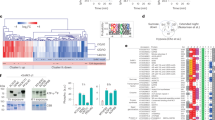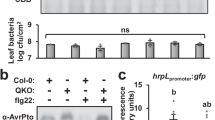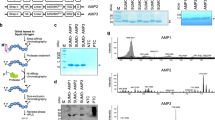Abstract
THE elucidation of metabolic relations between plants and their pathogens must precede a reasoned approach to control before and after infection. Disturbances of protein synthesis, respiration and transpiration have been widely reported in host plants after infection, but the direct manipulation of plant hormone systems in disease has been neglected, as has the study of metabolic control exerted by the pathogen.
This is a preview of subscription content, access via your institution
Access options
Subscribe to this journal
Receive 51 print issues and online access
$199.00 per year
only $3.90 per issue
Buy this article
- Purchase on SpringerLink
- Instant access to full article PDF
Prices may be subject to local taxes which are calculated during checkout
Similar content being viewed by others
References
Dekhuijzen, H. M., and Staples, R. C., Contrib. Boyce Thompson Inst., 24, 39 (1968).
Bailiss, K. W., and Wilson, Irene M., Ann. Bot., 31, 195 (1967).
Sequeira, L., Ann. Rev. Phytopathol., 1, 5 (1963).
Mothes, K., and Engelbrecht, L., Phytochemistry, 1, 58 (1961).
Hignett, R. C., and Kirkham, D. S., J. Gen. Microbiol., 48, 269 (1967).
Author information
Authors and Affiliations
Rights and permissions
About this article
Cite this article
KIRKHAM, D., HIGNETT, R. Antagonism between the Effects of Kinetin and Extracellular Metabolites of the Pathogen in Apple Scab Disease. Nature 225, 388 (1970). https://doi.org/10.1038/225388a0
Received:
Revised:
Published:
Issue date:
DOI: https://doi.org/10.1038/225388a0
This article is cited by
-
Cytoplasmic male sterility in barley
Theoretical and Applied Genetics (1983)
-
Effects of Interrupted Light on Plant Disease
Nature (1974)



